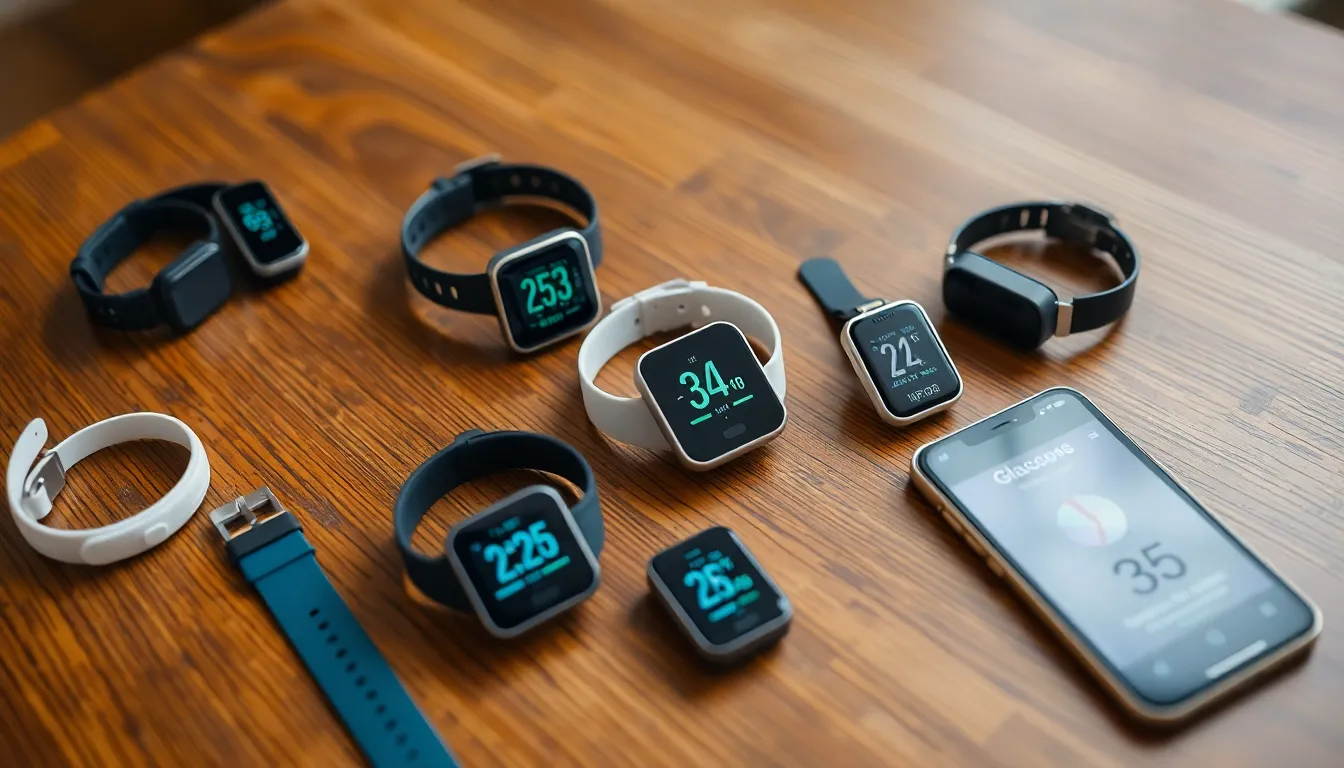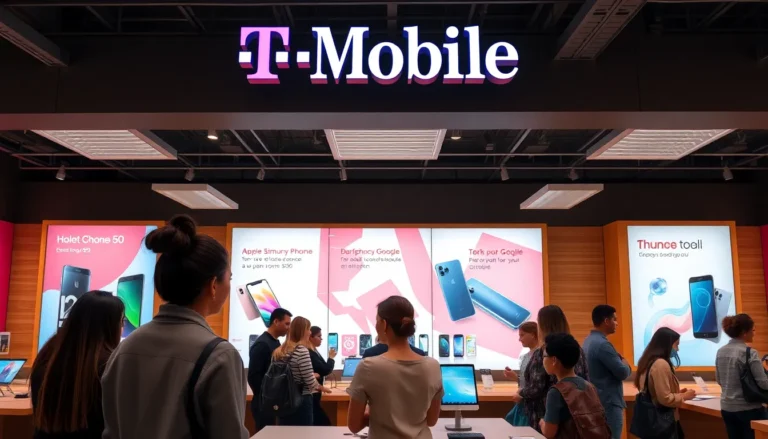In a world where technology keeps getting smarter, it’s no surprise that keeping tabs on blood sugar levels has gone high-tech too. Enter the wearable glucose monitor—your new best friend in managing diabetes without the hassle of constant finger pricks. But wait, before you dive headfirst into this gadget wonderland, let’s talk about the elephant in the room: cost.
Sure, these devices promise convenience and peace of mind, but how much is that peace of mind really worth? Spoiler alert: it might not be as wallet-busting as you think. Let’s explore the factors that influence the price of these nifty gadgets and see if they’re a worthy investment for your health and happiness. After all, who wouldn’t want to save a few bucks while keeping their blood sugar in check?
Table of Contents
ToggleOverview of Wearable Glucose Monitors
Wearable glucose monitors represent a significant advancement in diabetes management. These devices continuously track blood glucose levels, providing real-time data without the need for traditional finger pricks. Many users appreciate the convenience of receiving alerts on fluctuations, facilitating immediate adjustments in lifestyle or medication.
Several types of wearable monitors exist, such as continuous glucose monitors (CGMs) and flash glucose monitoring systems. CGMs measure glucose levels at regular intervals and send data to a paired device, while flash systems require users to scan the monitor to view their glucose levels. Understanding the differences helps users select the best option for their needs.
Cost remains a key factor when evaluating these devices. Prices for CGMs range from $150 to $300 for the device itself, with additional monthly expenses for sensor replacements averaging between $200 to $400. Flash glucose systems show similar pricing, typically falling between $250 to $300 initially, with sensor costs around $150 monthly.
Insurance coverage varies across plans, influencing out-of-pocket expenses for users. Some Medicare and Medicaid plans provide coverage for certain monitors and supplies. Users should check their specific insurance policies to understand benefits and limitations related to wearable glucose monitors.
Investing in a wearable glucose monitor can lead to long-term health benefits. Improved blood sugar management reduces the risk of complications associated with diabetes. Many users report feeling more empowered and informed about their health, making the devices not just tools but integral parts of their daily diabetes management strategies.
Factors Influencing Wearable Glucose Monitor Cost

Wearable glucose monitor costs vary significantly based on several factors. Understanding these influences helps users make informed decisions.
Device Features and Technology
Device features and technology play a crucial role in determining the cost of wearable glucose monitors. Continuous glucose monitors (CGMs) typically come with advanced technology that provides real-time blood sugar data, which increases their cost. Flash glucose monitoring systems, while generally less expensive, offer fewer features but still deliver reliable readings. Integration with smartphone applications, data sharing capabilities, and alerts for high or low blood sugar levels can also affect pricing. Higher quality sensors and longer battery life contribute to the overall expense, making it essential for consumers to assess their needs and choose accordingly.
Brand Reputation and Market Position
Brand reputation and market position significantly impact wearable glucose monitor pricing. Renowned brands with a history of reliability often command higher prices due to established trust among users. Market positioning also affects cost, as some brands target premium segments with enhanced features and superior technology. Newer brands may offer competitive pricing to gain market share but might lack the extensive support or innovations found in well-established companies. Consumers should consider both the brand’s legacy and the monitor’s features to ensure they invest wisely in a suitable device.
Comparison of Costs Across Different Brands
Wearable glucose monitors vary significantly in cost, influenced by brand and features. Understanding these differences helps users make informed choices.
High-End Options
High-end wearable glucose monitors often incorporate advanced technology, offering features like real-time data and smartphone integration. Models from brands such as Dexcom and FreeStyle Libre typically range from $250 to $300 for initial purchase. Monthly sensor replacement costs can average between $200 and $400, depending on usage and insurance coverage. These devices provide superior accuracy and consistency, appealing to users requiring precise blood glucose monitoring. Enhanced user interfaces further add to their value through intuitive designs and comprehensive app support. Such high-quality options support better health management, often justifying the higher investment.
Budget-Friendly Alternatives
Budget-friendly alternatives provide essential functionality at lower price points. Devices like Glucomen and Metron offer initial costs between $150 and $250. Monthly sensor costs typically average around $150, making them more accessible for users with limited budgets. While these monitors may lack some advanced features, they still deliver reliable glucose readings for effective diabetes management. Simpler interfaces ensure ease of use, catering to individuals seeking straightforward solutions. These options allow users to prioritize health monitoring without significant financial strain, making them a viable choice for many.
Insurance Coverage and Financial Assistance
Insurance coverage varies significantly for wearable glucose monitors. Many private insurers offer partial reimbursement for continuous glucose monitors and flash glucose monitoring systems. Coverage often hinges on the patient’s medical necessity and doctor’s recommendations. Authorized healthcare providers typically assist users in navigating insurance claims.
Medicaid also plays a crucial role in providing coverage for diabetic supplies, including wearable glucose monitors. Eligibility criteria may differ by state, affecting access to essential devices. Patients should verify their state’s specific regulations to understand available benefits.
Some manufacturers offer financial assistance programs. Dexcom, for instance, has initiatives that help users cover costs not addressed by insurance. FreeStyle Libre also provides assistance to qualifying individuals, ensuring broader access to glucose monitoring.
Health savings accounts (HSAs) and flexible spending accounts (FSAs) can further alleviate expenses. These accounts allow users to set aside pre-tax dollars for eligible medical purchases, including wearable glucose monitors. Such financial tools can make the effective cost of devices more manageable over time.
Users are encouraged to consult with their healthcare providers regularly. This discussion ensures that they optimize their health management strategies and stay informed about any changes in insurance policies. Understanding coverage options and available financial assistance enables individuals to make informed decisions, ultimately enhancing diabetes management.
Future Trends in Wearable Glucose Monitor Pricing
Technological advancements are expected to significantly affect wearable glucose monitor pricing. Devices incorporating cutting-edge features could see cost increases, reflecting their advanced capabilities. The market for continuous glucose monitors (CGMs) shows potential for price stabilization as competition grows and manufacturers innovate.
In the near future, costs may decrease due to increased production efficiency and economies of scale. Expect manufacturers to prioritize affordability while maintaining quality, which could improve access for users with varying budgets. Additionally, emerging companies entering the market may introduce competitive pricing strategies, further pushing down costs.
Advances in technology might lead to simplified designs, reducing manufacturing costs and ultimately benefiting consumers. Brand competition plays a critical role, as established companies like Dexcom and FreeStyle Libre face pressure from new players. These newcomers may offer similar functionality at lower price points, challenging established brands to enhance value.
Insurance coverage will likely evolve to better accommodate wearable glucose monitors as awareness of their benefits grows. Insurers may expand reimbursement policies based on increasing evidence of improved diabetes management outcomes. Many private insurers have started to recognize the importance of CGMs, which may lead to clearer coverage guidelines and reduced out-of-pocket expenses.
Changes in government policy could also shape pricing trends. Legislative initiatives aiming to improve diabetes care might influence how these devices are covered under Medicaid and other public programs. As these trends unfold, users can expect a more competitive pricing landscape that enhances accessibility and affordability in wearable glucose monitors.
Wearable glucose monitors represent a significant advancement in diabetes management. While initial costs may seem daunting the potential benefits in convenience and health monitoring can outweigh these expenses. Users should consider both the type of device and ongoing sensor costs when evaluating their options.
Insurance coverage varies widely and can greatly influence out-of-pocket costs. Exploring financial assistance programs and utilizing HSAs or FSAs can further ease the financial burden. As technology evolves and competition increases there’s hope for more affordable options in the future. Staying informed and consulting healthcare providers will ensure users make the best choices for their health and budget.


